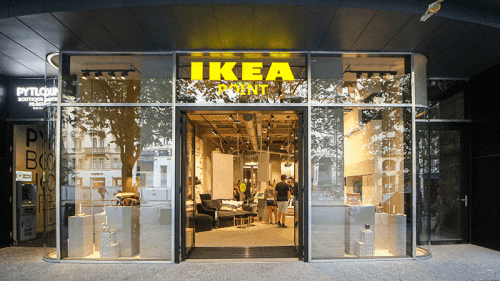The current climate requires U.S. economic development leaders to think ever more creatively about their resources, financing products, and target markets. Diversification and the greening of Philadelphia’s economy, coupled with targeted new funding sources, is one example of creating opportunities for growth even against the continued backdrop of a slow national recovery and declining state and federal resources.
The Philadelphia Industrial Development Corporation (PIDC) was founded in 1958 as a public/private partnership between the city of Philadelphia and the Greater Philadelphia Chamber of Commerce to promote economic development and combat the post–World War II exodus of manufacturing jobs. That initial focus on the industrial sector has long since been expanded to include corporate and nonprofit businesses in the office, retail, health, social service, and professional services markets. Throughout that time, PIDC’s stable partnership between the city’s government and business sectors and one-stop-shop capabilities have enabled it to compete for new resources and tailor its products to an expanded client profile.
|
|
The economic development incentives currently available in Philadelphia can be divided into the following four categories that, with the exception of tax-exempt financing, are deployed with private debt and equity to fully finance a project.
Tax-related incentives.
Philadelphia, like many cities across the country, has integrated an array of federal, state, and local tax-related incentives to attract and retain business. The most powerful of these are Keystone Opportunity Zones, located throughout the city, where companies that meet minimum growth or investment requirements are exempt from state and local real estate and business taxes for up to ten years. The city also offers a ten-year real estate tax abatement for any new development, and job creation tax credits to incentivize job growth. Alternatively, the city can provide tax increment financing (TIF), through which the city makes certain increased tax revenues—generated by development of a vacant or blighted parcel—available to finance the developer’s project costs. At the federal level, new markets tax credits have proved to be a complex but extremely important tool for community-based economic development. Notwithstanding the recent financing crisis, PIDC was able to use this tool over the past two years to spur four projects, including two retail centers, a hotel, and a high-technology small-business incubator that leveraged $150 million in total investment and created 700 jobs, all in Philadelphia’s low-income neighborhoods.
Grants.
PIDC serves as a conduit for several state and local grant programs. These funds are mostly targeted to nonprofits for capital improvement projects or for publicly owned infrastructure. Significant grant programs include the Redevelopment Assistance Capital Program (RACP), the Infrastructure Facilities Investment Program (IFIP), and the Infrastructure Development Program (IDP), all funded by the state. The RACP program, in particular, has been instrumental in funding growth in Philadelphia’s substantial nonprofit sector and was copied by the city in 2006 when it issued bonds to fund arts groups and other nonprofit organizations too small to gain the attention of the state program. Combined, these programs have invested over $75 million per year in the city’s nonprofit economy over the past five years. While budgetary pressures are a constant threat, the value of these programs to Philadelphia’s nonprofit-rich economy is crucial.
Tax-exempt financing.
PIDC also manages the Philadelphia Authority for Industrial Development (PAID), which issues tax-exempt financing for eligible nonprofits, certain exempt facilities, and small manufacturers. Under U.S. Internal Revenue Service (IRS) rules, governmental authorities such as PAID may issue bonds or privately placed debt on a tax-exempt basis, allowing the borrower’s interest rate to be substantially reduced.
In addition to standard tax-exempt financing products, PIDC has been able to develop a number of innovative tax-exempt vehicles under IRS guidelines. One is the Tax-Exempt Equipment Lease-Purchase Program, modeled on programs developed by the New York Housing Authority and a similar Massachusetts authority. This program enables eligible borrowers (nonprofits and small manufacturers) to lease equipment on a tax-exempt basis, thereby reducing their operating costs. Another is the Pooled Bond Program, which makes low-cost, tax-exempt funding available to smaller borrowers who would otherwise be excluded from tax-exempt markets by their small size. The program operates by pooling several smaller bond issues together to obtain efficiencies of larger bond issues.
Ongoing challenges in the tax-exempt markets have decreased volumes to $150 million per year over the past two years from a previous average of $300 million per year.
Loans.
PIDC coordinates and administers a broad range of financing programs that are based on federal, state, or local sources of funds. At the federal level, PIDC sources include U.S. Department of Housing and Urban Development (HUD), the U.S. Economic Development Administration (EDA), and the U.S. Department of Energy (DOE). Pennsylvania’s loan programs are coordinated by it’s Department of Commerce and Economic Development (DCED). The resulting loans are all at below-market rates and terms in order to encourage capital investment and require some form of public benefit, usually job creation or retention. The loans are granted according to need and are often secured by mortgages or other fixed assets on a subordinated basis to senior private financing.
PIDC has woven these disparate resources into a short list of simple financing products. Chief among these is PIDC’s Growth Loan Program, which offers subordinated financing for 45 percent of project costs up to a maximum of $750,000, repayable at 2.75 percent over terms of up to 15 years. The number of programs available that top $750,000 thins out quickly, though PIDC has found HUD’s Section 108 loan guarantee assistance program to be particularly effective when projects generate a significant amount of low- to moderate-income employment and are underleveraged by the private sector. Perfect examples include hotel and community-based retail development. Overall, PIDC’s small business loan and project finance activity has doubled in the past year as private sector credit requirements have strangled supply.
In contrast to PIDC’s subordinated financing, the Philadelphia Welcome Fund takes advantage of the U.S. Immigrant Investor Program to offer low-cost, senior-level debt. In 2003, PIDC partnered with CanAm Enterprises to form the Philadelphia Regional Center, offering low-cost financing in designated high-unemployment areas of the city. Under rules of the program, potential U.S. immigrants can invest up to $500,000 in a Philadelphia-based company and locate to the United States temporarily. If after two years the company has created at least ten jobs for each such investment, the immigrant investor is granted permanent residency. While coordinating with the strict rules of the U.S. Citizenship and Immigration Services is a significant challenge, this program has generated over $500 million of investment with the related job creation since inception.
Innovative new working capital programs created by PIDC include the Emerging Business Loan Program and the Emerging Business Guarantee Program, in which PIDC partners with banks to guarantee loans in borderline or high-risk lending situations. Both target businesses owned by minorities, women, and the disabled. Also under working capital programs, the Bridge Financing Program emerged from the demand for grants; in many cases companies need bridge financing during a project because grant funds are often not distributed until the end of the project. PIDC is even working on a bonding program to help small contractors get bonding for construction projects.
Sustainability loans focus on funding projects using sustainable, green building practices. One creative new offering is the EnergyWorks Loan Fund, backed in part by DOE and created in cooperation with the city and Philadelphia’s largest community development finance institution, the Reinvestment Fund (TRF). It helps fund projects—new construction, retrofits, energy-efficient equipment and renewable energy, and heating, ventilation, and air-conditioning systems—that reduce energy consumption by at least 25 percent from industry standards. The Stormwater Management Investment Program, created in partnership with the Philadelphia Water Department, is an innovative tool that encourages businesses to develop stormwater detention infrastructure on their sites. From $75,000 to $1 million is available per project at a 1 percent rate to qualified companies that reduce stormwater flow.
Does it all work? In 2010, PIDC and PAID settled 170 financing transactions representing over $400 million invested in the city’s economy, including $52 million in low-interest loans, $150 million in tax-exempt debt, $167 million in state and local grants, and $46 million in new markets tax credit allocations. These efforts created or retained at least 5,000 Philadelphia jobs and leveraged over $850 million in total investment. That is not enough to cancel the recession, but it certainly helped keep Philadelphia a sound, working, livable city.
All American cities need economic stimuli and development. The progress made in Philadelphia demonstrates that there is still plenty of creative thinking going on in urban development organizations.





